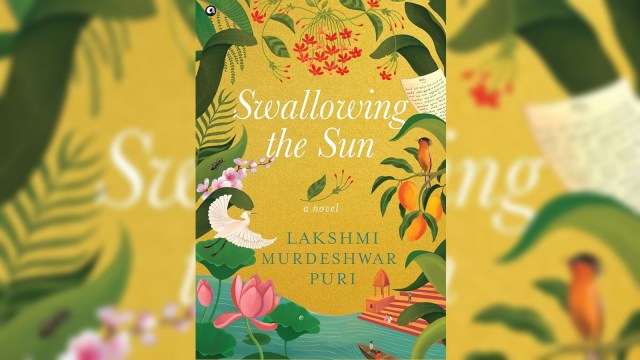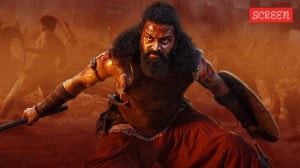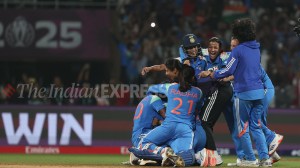“Change is disquieting for those in positions of power and complacency”: Lakshmi Puri
The writer and diplomat on her debut novel, Swallowing the Sun, why young people should be politically engaged, and the theatre and poetry that influenced her prose
 Lakshmi Puri's Swallowing the Sun (Rs 899, Aleph) (Credit: Amazon.in)
Lakshmi Puri's Swallowing the Sun (Rs 899, Aleph) (Credit: Amazon.in)Set during the freedom movement, Lakshmi Puri’s Swallowing the Sun (Rs 899, Aleph) is about the encounter of India’s national story with unknown individuals, the constant tussle between revolution and reform, encapsulated in the gaze of Malati, a girl from a Maharashtrian village who grows up to know the cost at which independence — for herself and her country — comes. We speak to Puri on how the novel came about. Edited excerpts:
What inspired the novel?
This novel wanted to be written for years, if not decades. I was born to parents who were 45 years old when I was born, so they belonged to a much older generation. I was a post-Independence child. And they belonged to the British Raj period and had contributed their might to India’s Independence struggle.
Their world and stories really fascinated me. I wanted to tell an epic story no one had told before, inspired by my parents’ odyssey. They were extraordinary people in multiple ways, and broke so many boundaries as a generation. They were feminists, believed in women’s emancipation, engaged with the British even while fighting them. They dealt with the dilemma of how the Western liberal values they admired were not adopted by the British in India, and could be used to gain independence.
Simultaneously, they had a fierce desire to reclaim their civilizational heritage and sense of the self. It was a period of tremendous cultural and literary efflorescence, especially in Maharashtra. This novel tries to recreate that Marathi ethos against the backdrop of the times through poetry, theatre, and music – and its invocation as a kind of soul force.
I wanted to write about what freedom and nation-building meant, to capture the levers and turning points of social transformation. I was in the United Nations and, within it, led a global organization on women’s empowerment. My passion and advocacy for the feminist cause resonates through the novel. Some characters were so avant-garde on gender relations, but while much has changed, much has not. It’s a book as much about and for young people to read.
Did you know the story from the beginning or did it develop surprisingly?
I knew the kernel of three characters – Malati, Guru and Baba – and the rest grew around them like the silken threads of a cocoon. The characters emerged as if from nowhere and tangled around these three and led me on an uncharted journey. Everyone has a right to and potential for self-realization, and it’s up to us how we negotiate and eventually break the boundaries drawn for us. For instance, young people in my novel are constantly debating non-violent or armed resistance and whether the revolutionary way can serve the national cause best.
Women in the story are trying to escape bondage, with women sometimes holding them down. What drew you to the idea of women also potentially being agents of patriarchy?
None of my women are trying to hold other women down except perhaps Ramabai. Even though the protagonist’s mother is the upholder of ‘Stri Dharma’, she never holds her two daughters back. Neither does Surekha resent the freedom these girls have once she’s married and settled in her relationship. Even Mai (Guru’s stepmother) is a rebel and enviously applauds Malati’s rebellion. They’re all trying to soar into the sky and swallow the sun, to make miracles happen whether they succeed or not. I’d say the same about Shaila, Chandra and Ambu Tai. Shanta Bai is a revolutionary in disguise. These women are always straining at the leash, trying to redraw boundaries for themselves.
How do your individual characters affect the freedom movement?
Young people even today know that change happens in many ways, one of which is reform. Revolution doesn’t happen out of nothing. I wanted to capture that snowballing effect with the freedom struggle as a transformational moment. Though my characters aren’t Annie Besant, Jawaharlal Nehru, Mahatma Gandhi, or BR Ambedkar, they were an integral part of achieving independence. It’s a call to young people today.
What research was needed to depict the freedom movement accurately?
As a student of history, I developed my characters’ engagement with the freedom movement around its key events and leaders. Many of the book’s historical figures were from Ratnagiri, like Veer Savarkar, Maharshi Karve and Annie Besant. Madan Mohan Malviya had an association with Banaras. Some stories were based on what I heard from my family, and some on what I read. And some of it was imagined. For example, I discovered that my parents and Yusuf Meher Ali, who led the Simon Commission youth protests, were in the same Elphinstone College class and later in the same law college course. That’s how an episode of protest is born in the novel.
The story is partly set among the quiet masses of the British Raj. Political scientists comment on how this sense of a “cultural insult” was used by freedom fighters – many of whom feature in the novel – to turn the tide against the Empire. Have you seen this kind of discourse change in Indian politics over the years?
Of course, it has changed. It had already begun to change in the post-Independence era I was born in. It has evolved for 75 years and we are in a different era altogether, an era of renewed self-confidence and assertion of our identity, while reclaiming our civilizational heritage and rightful place in the world.
For example, in the narrative, enacting a patriotic play was contested. It was asserted as Vishnu’s chakra flying across as an expression of Gandhian satyagraha subduing the British Raj. But that image is now metamorphosed. We are already self-realized in so many ways. We have to strengthen that and move to a new stage of freedom and national achievement.
Why did you want to explore theatre as resistance?
It’s a very powerful medium. As a child, I was exposed to vibrant Marathi theatre. In Delhi I had met my father’s friend Mama Warerkar, also a Rajya Sabha MP, whose iconoclastic plays like Bhumikanya Sita had deeply moved me. His revolutionary drama Satte Che Gulam (Enslavement of Power) is used in the play to illuminate nationalistic and social justice themes. I thought theatre could be Guru and Malati’s first act of patriotism, from which they get the zeal to plunge into the frenzy of satyagraha, braving lathi-charge on the docks of Bombay. It also encapsulates their love for each other and the country — that romance is combustive.
There are also oppositions to intercaste, intergender and interclass mingling, in spaces which are fairly educated. Yet there is this hypocrisy. Why was that hypocrisy interesting to you?
Because it seems to be a perennial conundrum, a strain between the comfort of the same place and change. Change is ever disquieting for those in positions of power and complacency. Look at a feudal character like Malak. He is educated and educates his own daughter. But then, a patriarchal mindset somehow returns. When she leaves her husband, it’s an earth-shattering moment for him. Perhaps he regrets even giving her the freedom he did. You see these tensions not just in those days, but today as well.
Should there be more introspection amongst educated classes about the positions they advocate? And why is it important to recall these contestations of the past?
Of course. Baba is a classic case of someone who practices what he preaches. But whether it is patriarchy, caste system, or the freedom movement, the educated classes need to be true to themselves and the ideas they espouse. A young person asked me, “Why should we be so interested in the independence movement after being so removed from it?’ My answer is, to remember and never to forget the value of what you have. The remembrance transforms you and makes you more self-aware.
The story is rooted in Maharashtra but also pan-Indian, across rural and urban spaces. In urban privileged spaces there is a notion that we have moved beyond caste or gender discrimination. The characters here vary – some agree, some don’t.
It’s pan-Indian, set across Maharashtra, Desaikheda, Vaishali, Indore, Banaras, Simla and Delhi. Then or now, social and political reform is never complete. We really need to push the frontiers of women’s empowerment and a casteless society in every space because they envelop us repeatedly.
Were there any literary influences that you drew from?
I was influenced by Charles Dickens, Jane Austen, William Shakespeare, EM Forster, James Joyce, Bernard Shaw. I’d also include TS Eliot, WB Yeats and Rabindranath Tagore. Among Indian writers in English, Raja Rao, RK Narayan, Manohar Malgonkar. Hindi writers like Premchand and Marathi poets that I have evoked in the novel are part of my literary consciousness.
Did you use historical figures as an anchor for these fictional characters?
Not as anchors. But I felt that Malati meeting Madan Mohan Malaviya or Mahatma Gandhi marked a milestone in their journeys by affirming her. Same for the youngsters’ meeting with Annie Besant as she went on to found the Mahila Mahavidyalaya. Or their encounter with Jiddu Krishnamurti. These connections between individual actions of the protagonists and the big players on the stage of India formed the tapestry I was trying to weave.



- 01
- 02
- 03
- 04
- 05



























